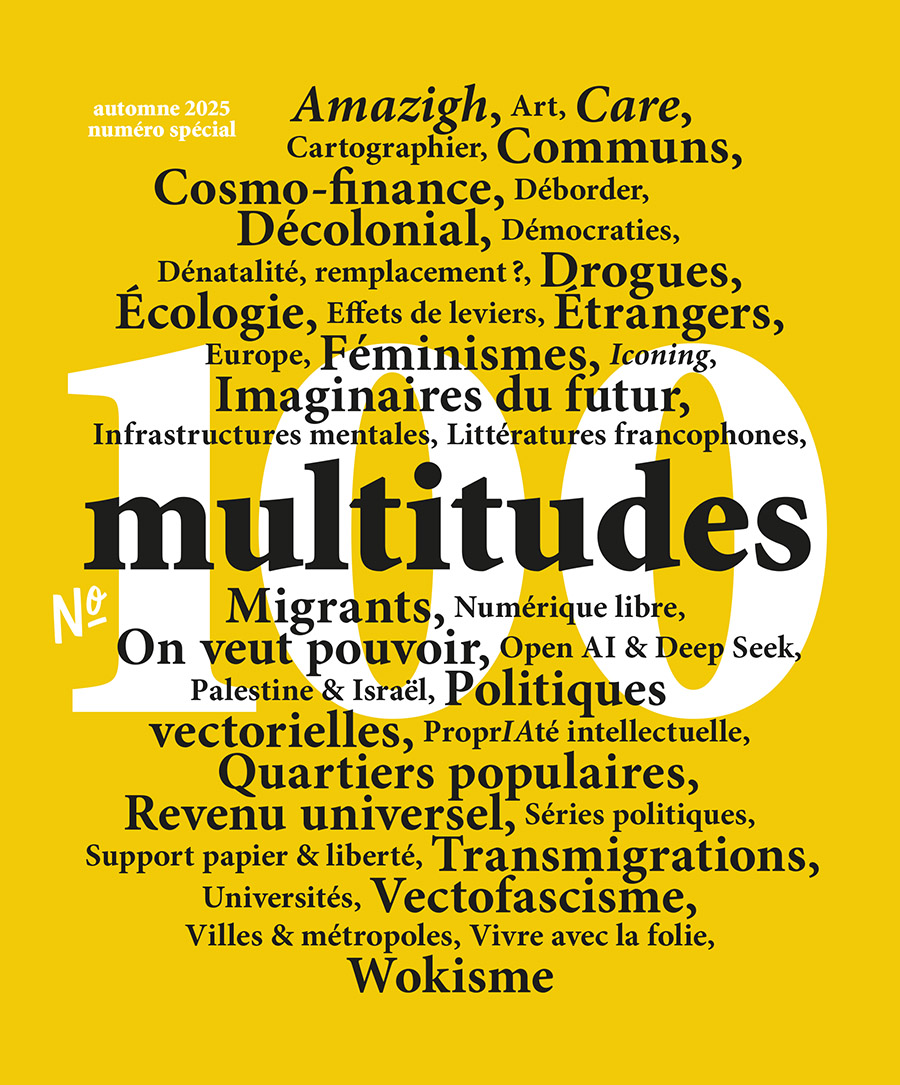L’inceste, un crime de liens, par Priscilla De Roo
Où est le quatrième petit singe ? Dans les Entretiens de Confucius (551-479 av. J.-C.), il est écrit : « De ce qui est contraire à la bienséance, ne pas regarder, ne pas écouter, ne pas le dire, ne pas le faire ». La transcription bouddhiste de cette maxime a produit la fameuse statuette-talisman des trois petits singes de … Continuer la lecture de L’inceste, un crime de liens →
Ruedi Baur, conversation avec Claudia Cano, par Ruedi Baur et Claudia Cano
Questions ouvertes Ruedi Baur est designer, graphiste, spécialisé dans les questions liées à l’espace public, « espace social et partagé, et révélateur de nos principes civiques ». Toujours en quête d’une intelligibilité de cet espace public, Ruedi Baur interroge les effets qu’a eus la crise sanitaire de la Covid 19 sur les principes civiques. Le besoin de « mutation » … Continuer la lecture de Ruedi Baur, conversation avec Claudia Cano →
L’Iran par-delà la République islamique, par Behrang Pourhosseini et Gaëtane Lamarche-Vadel
Suite à l’une des guerres les plus longues du XXe siècle (la guerre Iran-Irak 1980-1988), l’Iran s’est jeté dans les bras des politiques néolibérales, afin de reconstruire son économie. Un fossé grandissant s’est creusé entre le peuple et les gouvernants en cheville avec une bourgeoisie affairiste. Depuis la fin de cette guerre, l’Iran a connu deux … Continuer la lecture de L’Iran par-delà la République islamique →
Lieux communs urbains, par Antonioli Manola et Florian Bulou Fezard
La question de la sociabilité a été choisie comme fil conducteur de cette Mineure, en référence aux travaux du philosophe et sociologue allemand Georg Simmel. Simmel a introduit en effet dans la sociologie une distinction essentielle entre « socialisation » (Vergersellshaftung) et « sociabilité » (Gesellgkeit)1. Alors que la socialisation concerne les liens que les êtres humains tissent entre … Continuer la lecture de Lieux communs urbains →
La chute de la Maison Trump
Un point d’orgue au populisme ?, par Yann Moulier Boutang
Trump n’avait pas été réélu en novembre 2020. Il a laissé planer le doute sur son départ le 16 janvier, jusqu’au bout. Si 47 % des électeurs républicains ne croient pas que les élections ont été truquées, 48 %, une très courte majorité, donc pas loin de 35 millions d’électeurs, le croient eux, dur comme fer. Coup d’État pour un … Continuer la lecture de La chute de la Maison Trump
Un point d’orgue au populisme ? →
La Marche des Solidarités
Itinérance et alliance, par Gaëtane Lamarche-Vadel
Porte Saint-Denis à Paris, « la Marche des Solidarités », fête le 18 décembre, anniversaire de la journée où fut adoptée par l’OIT la Convention internationale sur « la protection des droits de tous les travailleurs migrants et des membres de leur famille » : résolution 45/158 du 18 décembre 1990. 20 ans après, en 2020 les objectifs de la … Continuer la lecture de La Marche des Solidarités
Itinérance et alliance →
La nuit d’après
Lecture critique du couvre-feu, par Luc Gwiazdzinski
Pendant des années, on a rappelé que la première liberté supprimée par les autorités en cas de crise était celle de circuler la nuit. On citait les coups d’État, les guerres ou les mesures d’exception accompagnant certaines manifestations altermondialistes comme le sommet de Seattle. C’était toujours loin, dans un autre contexte ou avant. Jamais ici … Continuer la lecture de La nuit d’après
Lecture critique du couvre-feu →
Le mythe de la charge maximale
Migrations mondiales et « capacité d’accueil » de l’État nation, par Michelle Ty
Esthétiques à échelles à frictions, par Nathalie Blanc et Christoffel David
Même si l’hégémonisme de Netflix est repoussante, spectateurs et spectatrices reconnaissent que la globalisation des productions de série n’ôte rien au génie des scénaristes et que Netflix déploie des trésors de stratégie pour adapter son offre d’un coin de la planète à l’autre. Les jugements esthétiques sont aux prises avec des questions d’échelles de diffusion, … Continuer la lecture de Esthétiques à échelles à frictions →

